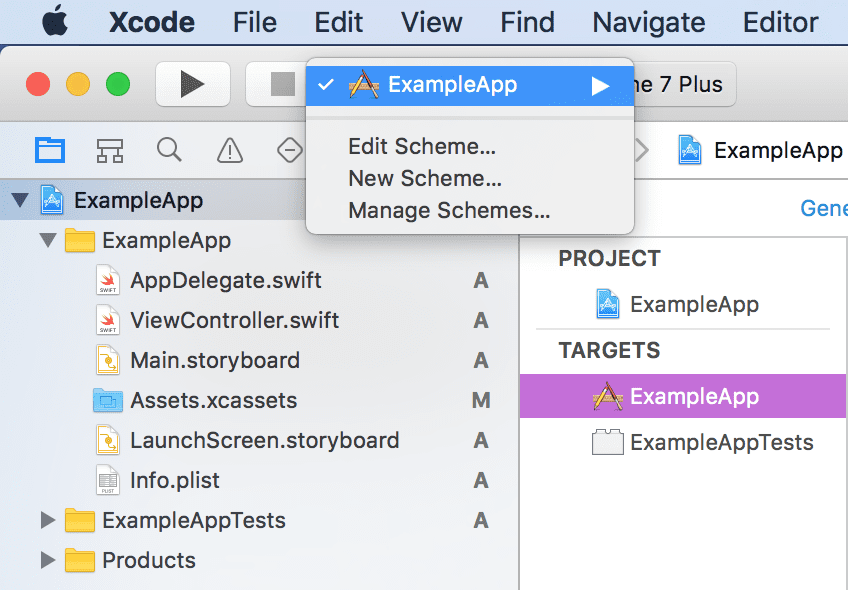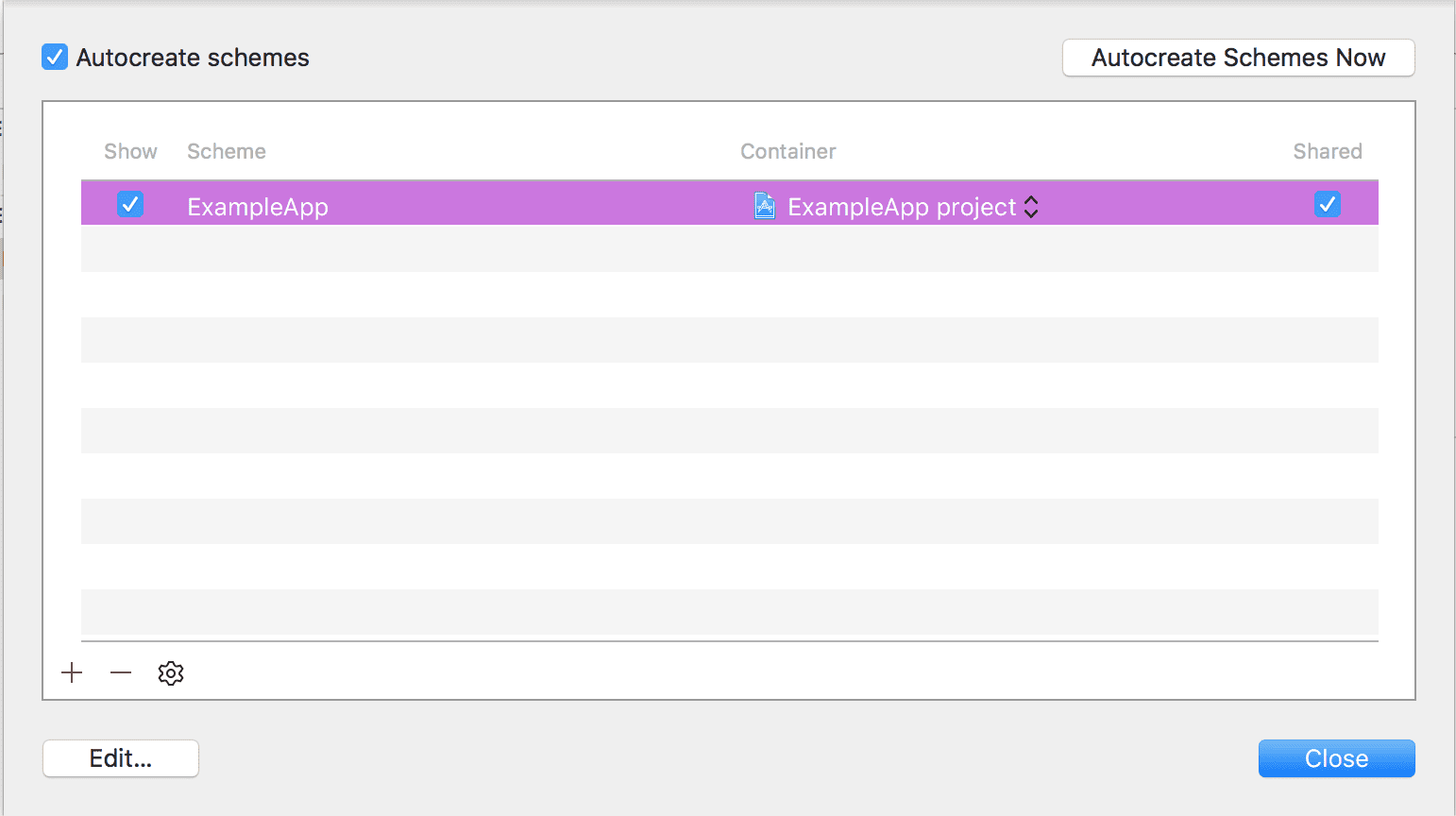iOS Project Tutorial

 Cloud
Cloud This document describes how to automate builds, testing, and deployment of an iOS application project with CircleCI in the following sections:
- Running tests
- Code signing and certificates
- Installing dependencies
- Running tests
- Advanced configuration
- Example application on GitHub
Note: There is also documentation for testing iOS and getting started on MacOS.
Overview
The following sections walk through how to write Jobs and Steps that use xcodebuild for this application, how to set up code signing and a provisioning profile in the CircleCI environment, and how to deploy with Fastlane.
Prerequisites
- Add your project to CircleCI, see Hello World.
- This tutorial assumes you have an Xcode workspace for your project with at least one shared scheme and that the selected scheme has a test action. If you do not already have a shared scheme, you can add this in Xcode by completing the following steps:
- Open your Xcode workspace or project.
- Use the scheme selector to open the Manage Schemes dialogue box as shown in the following image.

- In the manage schemes dialog, select the scheme you wish to build, and ensure that the Shared checkbox is enabled.

- Commit and push the schemes.
Running tests
For iOS projects, it is possible to run your tests with Fastlane Scan as follows:
jobs:
build-and-test:
macos:
xcode: 12.5.1
steps:
...
- run:
name: Run tests
command: fastlane scan
environment:
SCAN_DEVICE: iPhone 6
SCAN_SCHEME: WebTests
Refer to the Xcode version section of the iOS testing document for the complete list of supported versions.
Code signing and certificates
Refer to the code signing doc for details.
To further customize your build process to use custom tools or run your own scripts, use the config.yml file, see the Sample 2.0 config.yml document for customizations.
Installing dependencies
To install dependencies from homebrew, for example, use a run step with the appropriate command:
steps:
- run:
name: Install Homebrew Dependencies
command: brew install yarn
- run:
name: Install Node Dependencies
command: yarn install
Running tests
The run step is also used to run your tests as in the following example of the short form run syntax:
steps:
- run: fastlane scan
Deployment
To deploy your application with CircleCI using Gym and Deliver from Fastlane specify an identifier, a branch or pattern that the release should run on, and a set of commands to run the release.
version: 2.1
jobs:
test:
macos:
xcode: 12.5.1
steps:
- checkout
- run: fastlane scan
deploy:
macos:
xcode: 12.5.1
steps:
- checkout
- run:
name: Deploy
command: fastlane release_appstore
workflows:
test_release:
jobs:
- test
- deploy:
requires:
test
filters:
branches:
only: release
Advanced configuration
See the Testing iOS Applications on macOS document for more advanced details on configuring iOS projects.
Example application on GitHub
See the circleci-demo-ios GitHub repository for an example of how to build, test and sign an iOS project using Fastlane on CircleCI.
Help make this document better
This guide, as well as the rest of our docs, are open source and available on GitHub. We welcome your contributions.
- Suggest an edit to this page (please read the contributing guide first).
- To report a problem in the documentation, or to submit feedback and comments, please open an issue on GitHub.
- CircleCI is always seeking ways to improve your experience with our platform. If you would like to share feedback, please join our research community.
Need support?
Our support engineers are available to help with service issues, billing, or account related questions, and can help troubleshoot build configurations. Contact our support engineers by opening a ticket.
You can also visit our support site to find support articles, community forums, and training resources.

CircleCI Documentation by CircleCI is licensed under a Creative Commons Attribution-NonCommercial-ShareAlike 4.0 International License.



